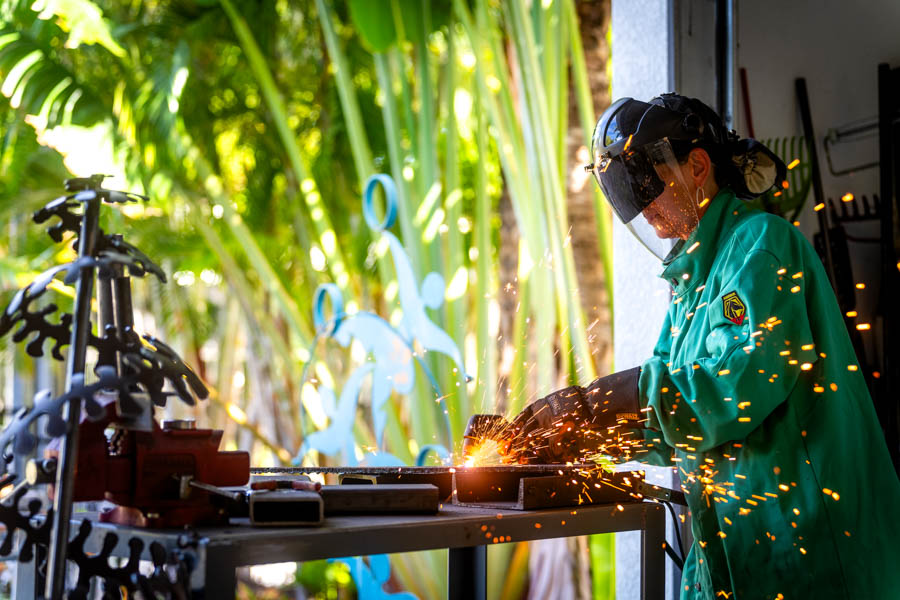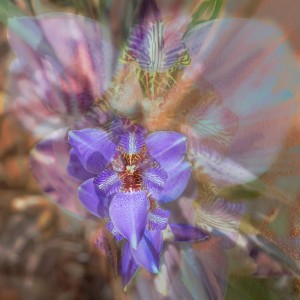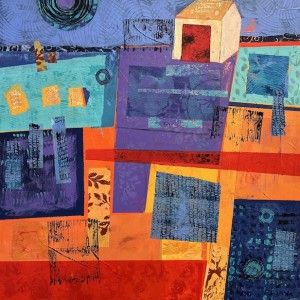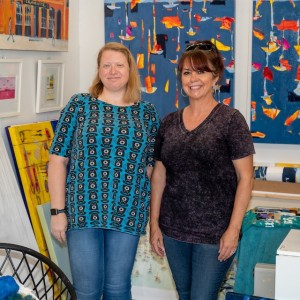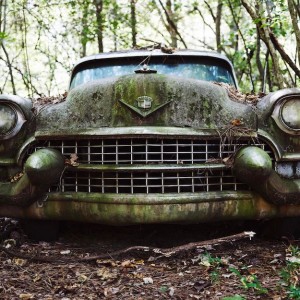Hidden away in a garage like many others in Sarasota, a cheerful god breathes life into her creations. Made of metal and fire, all long limbs and lumpen bodies, they emerge as things primal and ancient, cave paintings animated by flame. They rejoice in their creation, the subtle bend and play of their stretched and slender forms evoking wonder and exuberance, curiosity and vitality. And for a sculptor in the wake of personal tragedy, the strange figures represent a surprising return to form.
Each figure begins, as so many of Pamela Olin’s sculptures do, with the steel. Malleable but sturdy and with none of the brittleness of aluminum, it’s been her medium of choice for at least 30 years. “It literally sings the right song in my hands,” she says. And armed with a MIG welder and a plasma cutter, she can make it sing pretty much any song she wants.
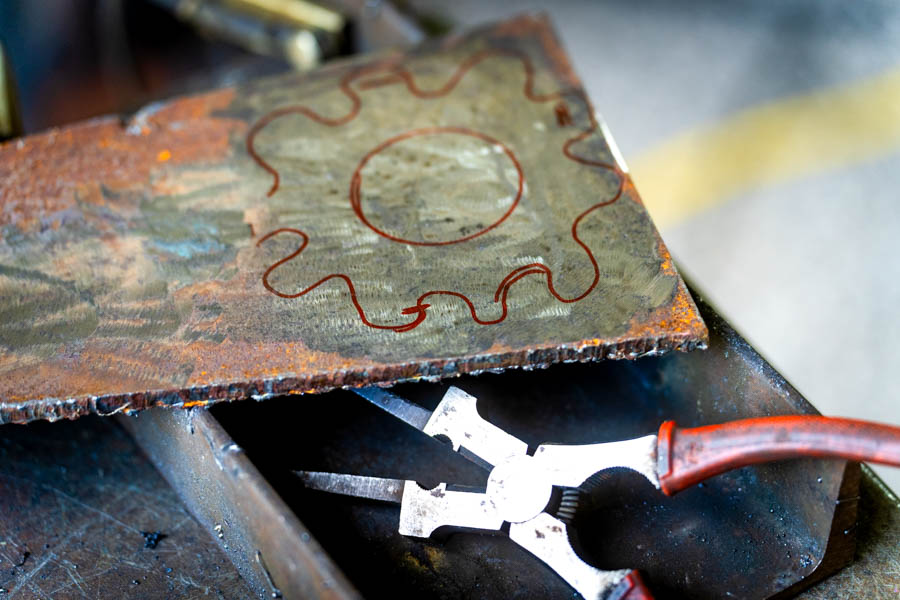
First, she builds the armature—crafting the thing’s skeleton from steel welding rods, bent and posed just so. Then, armed with that MIG welder and a handful more welding rods, she gives it form, layering its anatomy in drops of molten steel, painting first bone then muscle and finally flesh in gleaming liquid metal. It cools and hardens like a magma flow, a skin all knobbly pits and protrusions, oozings and imbalances. Olin loves it all the more for its supposed flaws. “Perfection is overrated,” she says, “and kinda boring.” Arranged on bases of scavenged olive wood or steel, the weld spatter from their creation its own decoration, their long slender limbs, at last complete, accentuate the careful posing, their subtle arcs evoking attitudes seemingly beyond their simplicity. With names like “Progress” and “Seeker” and “We Rise Together,” they wield strange scepters and appear transfixed by the basic geometry of their world. Coated in pewter or copper or that blue Disney paint with the glitter mixed in, they invite you not to take any of this too seriously.
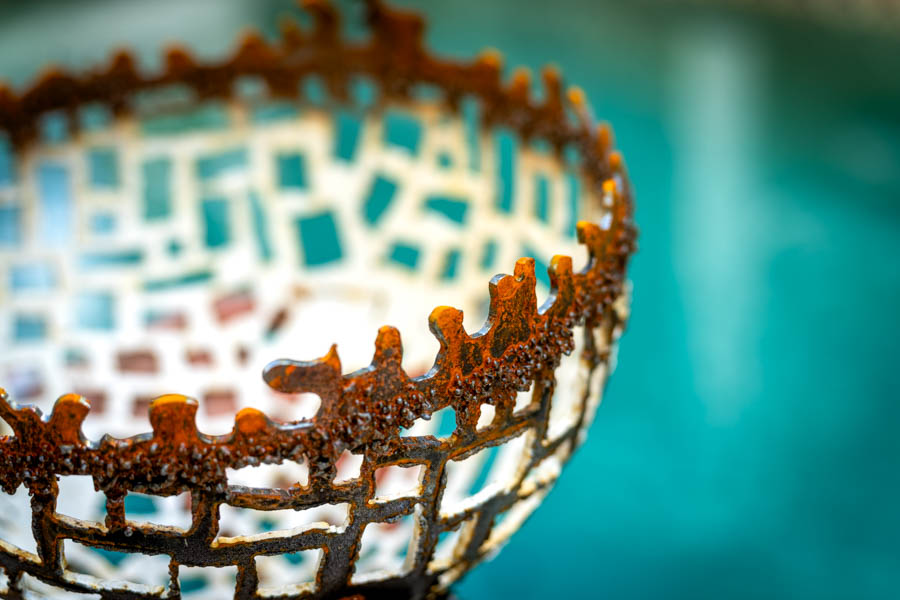
But as happy as they seem and as cheerful as their god appears, their mere presence today speaks also to their recent absence, as the artist who once found endless joy in the human form abandoned its shape for five long years. “They were out of my vocabulary,” Olin says. Because if terrible pain has the power to inspire great art then it can also stopper it up. And following the sudden loss of her husband, Olin found herself unable to create as she once did. “So I went back to basics,” she says, and began playing with cubes and other simple shapes, reveling in their purity and crafting ever more complicated structures and installations from their ordered forms. No figures, no faces. Five years. Until they suddenly returned, unbidden but welcome all the same. “They crept in quietly, like the fog,” Olin says with a smile. “On little catfeet.” And she took it as a sign telling her it was time to start again. “I have dealt with, I have processed, and I have come back to the beginning,” she says.
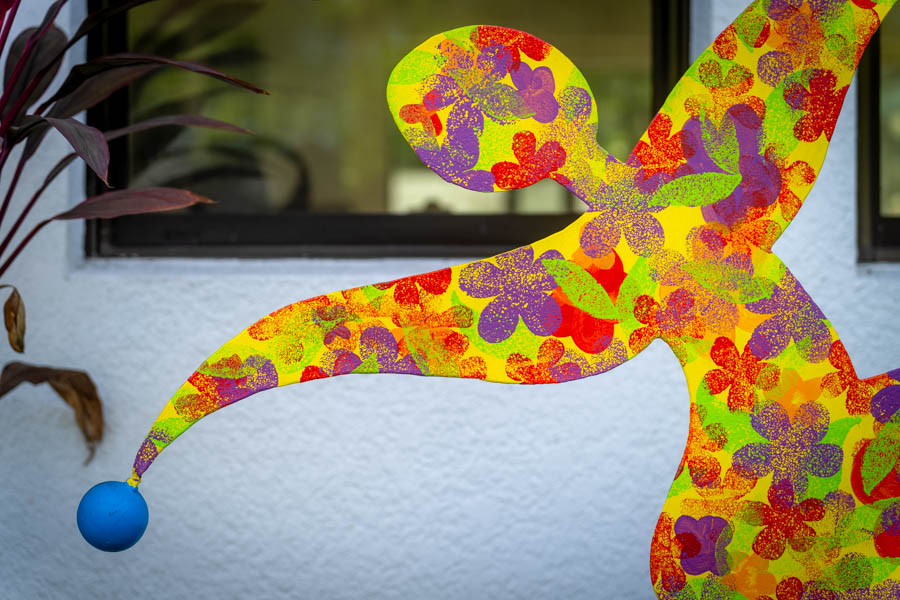
Today, the figures come freely and Olin will be juggling as many as a dozen projects at once, each in some stage of concept or completion. Welder in one hand and plasma cutter in the other, Olin finds her center. “There’s a lot of focus and breathing and bracing and balance,” she says. “There’s a lot of zen.” And as each new figure is brought to life, she is reminded of what she loves so much about steel: They will never break. If they do, she can fix them. “And where you weld them,” Olin says, “they are stronger.”





